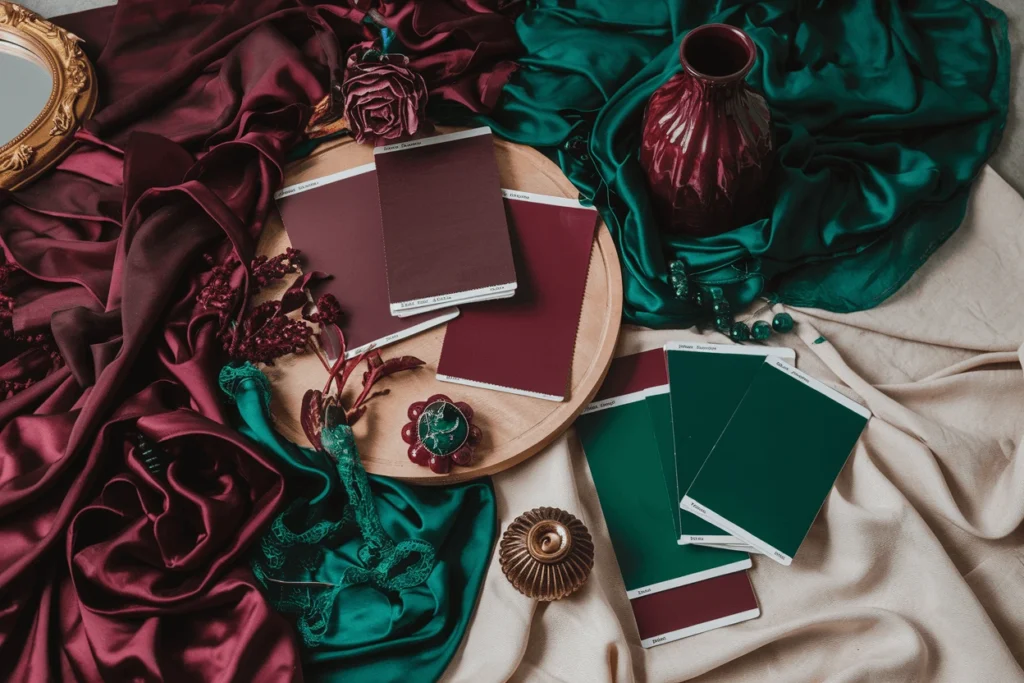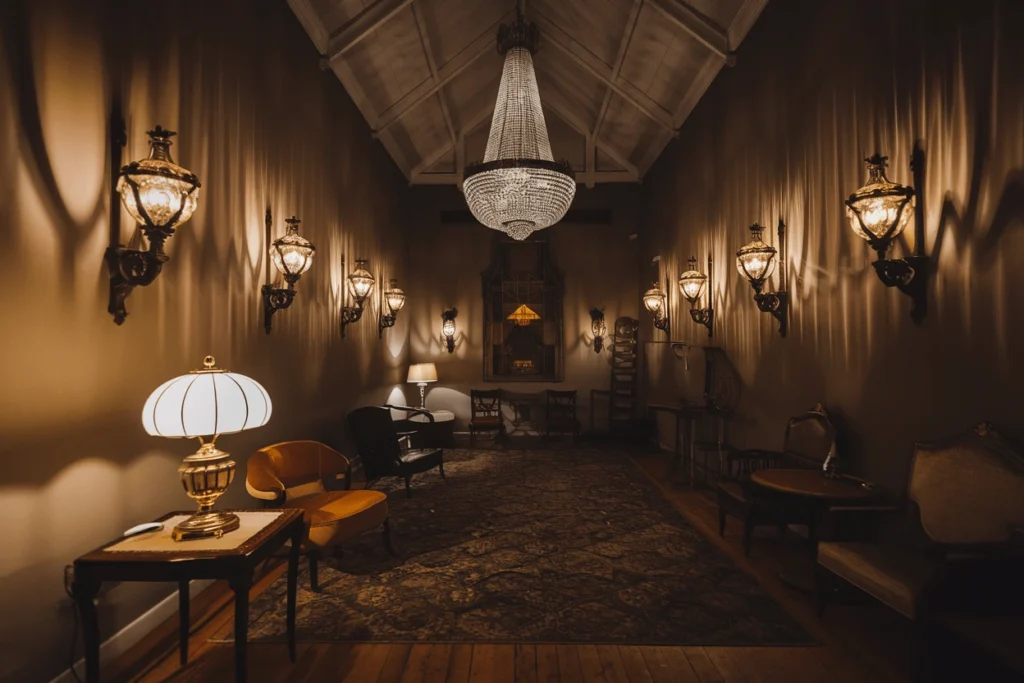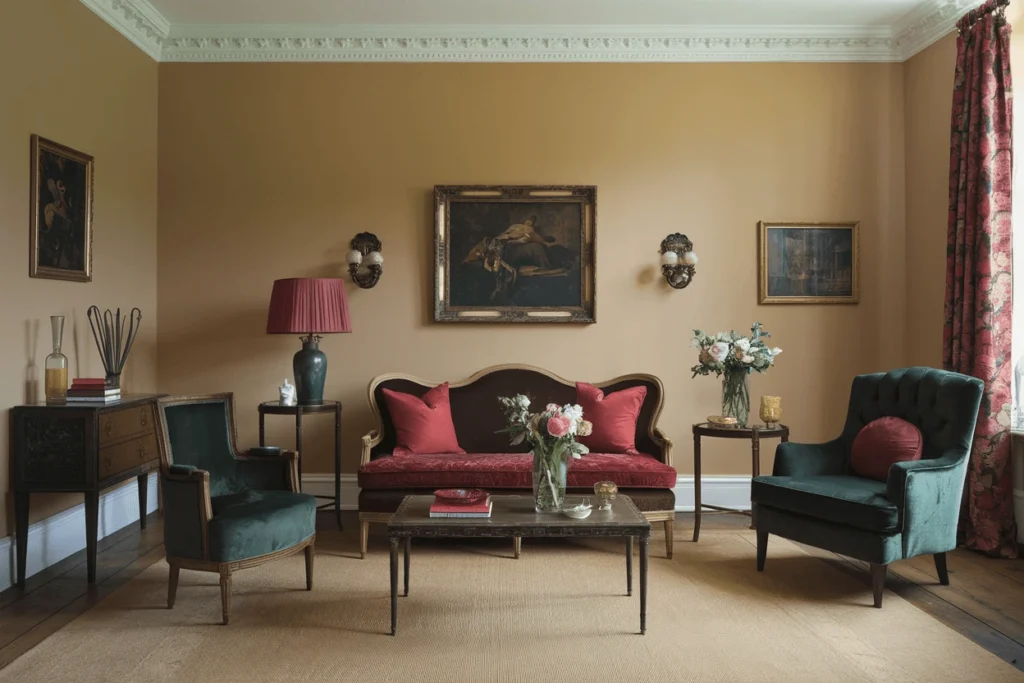When you think of Victorian decor, you might picture a lavish living room filled with intricate details, rich textures, and a deep sense of history. The Victorian era, spanning from 1837 to 1901 during Queen Victoria’s reign, was marked by significant social, economic, and artistic changes. This period saw a shift towards embracing comfort and aesthetics in home design, resulting in an eclectic mix of styles and materials that define Victorian decor today.
Key Characteristics of the Style
To appreciate the Victorian living room fully, it’s essential to understand its hallmark features:
- Ornate Detailing: From carved woodwork to intricate moldings, Victorian decor is all about embellishment. Look for pieces that showcase craftsmanship, whether it’s a beautifully designed fireplace or elaborately framed mirrors.
- Rich Colors: The Victorian palette is often characterized by deep, saturated hues like burgundy, forest green, and navy blue. These colors create a cozy, inviting atmosphere while exuding elegance.
- Eclectic Mix: Victorian homes often blended different styles, including Gothic, Renaissance, and even Eastern influences. Don’t shy away from mixing various elements to achieve a unique look.
- Comfort and Luxury: Soft furnishings, plush upholstery, and abundant textiles make the Victorian living room a comfortable space that invites relaxation.
Choosing the Perfect Color Scheme for Your Victorian Living Room
Color sets the tone for your entire living room, and in a Victorian setting, you’ll want to choose hues that reflect the elegance and warmth of the era.

Classic Victorian Color Palettes
- Deep Jewel Tones: Think of colors like emerald green, sapphire blue, and rich burgundy. These shades not only evoke a sense of luxury but also create a dramatic backdrop for your furniture and decor.
- Warm Neutrals: Creams, taupes, and soft browns can balance the richness of darker colors while still maintaining the Victorian aesthetic. Use these as a base for walls or larger pieces of furniture.
- Accent Colors: Consider adding splashes of gold or brass through accessories, such as picture frames or candle holders. These metallics enhance the overall richness of your space.
Tips for Selecting Paint Colors and Wallpaper
- Test Samples: Always try paint samples on your walls to see how they look in different lighting throughout the day.
- Consider Wallpaper: Wallpaper featuring floral or damask patterns can add depth and character to your walls. Look for options that reflect the Victorian style while complementing your chosen colors.
- Use Contrast: Pair lighter colors with dark, ornate furniture to create visual interest and enhance the elegance of the room.
Suggestions for Accent Colors
- Cushions and Throws: Use bold cushions and throws in rich colors to break the monotony and introduce textures.
- Artwork: Incorporate artwork that reflects the Victorian theme—think landscapes, portraits, or still lifes in ornate frames.
Furniture Selection: Embracing Elegance and Comfort
When furnishing your Victorian living room, each piece should be chosen with care to reflect both style and comfort.
Types of Victorian Furniture
- Sofas and Armchairs: Look for pieces with tufted upholstery, rolled arms, and wooden accents. Velvet or brocade fabrics are particularly suitable for achieving that authentic Victorian feel.
- Coffee Tables: Opt for tables with intricate carvings and dark wood finishes. An oval or round table can soften the look of your space and facilitate conversation.
- Sideboards and Cabinets: Vintage pieces featuring elaborate carvings or gilded finishes can add both storage and style to your living room.
Recommended Pieces for a Victorian Living Room
- Victorian Settee: A beautifully upholstered settee can become a focal point in your living room. Choose one with intricate woodwork and lush fabrics.
- Accent Chairs: Mix and match different styles of chairs to create an eclectic look. High-back chairs with armrests work beautifully in Victorian decor.
- Ottomans and Footstools: These add comfort and can serve as extra seating. Look for richly upholstered options that complement your color scheme.
Material and Upholstery Considerations
- Wood Types: Dark woods such as mahogany or walnut are ideal for Victorian furniture. Look for pieces with rich finishes and intricate details.
- Fabrics: Opt for luxurious fabrics like silk, velvet, or brocade. These materials not only elevate the decor but also provide a sumptuous feel to your living room.
Lighting: Setting the Mood with Victorian Charm
Lighting plays a pivotal role in creating the right ambiance in your Victorian living room. The right fixtures can enhance your decor while providing adequate illumination.

Importance of Lighting in Victorian Decor
In Victorian times, lighting fixtures were often decorative elements in their own right. Embrace this idea by selecting lighting that not only serves a functional purpose but also complements your decor style.
Types of Lighting Fixtures: Chandeliers, Sconces, and Lamps
- Chandeliers: A grand chandelier can serve as a stunning centerpiece. Look for options that feature crystal or glass elements for a touch of opulence.
- Wall Sconces: These add elegance while saving floor space. Choose sconces with intricate designs to echo the ornate detailing found throughout the room.
- Table and Floor Lamps: Select lamps with decorative bases and shades that complement your color scheme. Tapered shades in rich fabrics can add warmth and softness.
Tips for Layering Light
- Use Multiple Sources: Incorporate a mix of overhead lighting, wall sconces, and table lamps to create a warm, inviting atmosphere.
- Dimmer Switches: Install dimmer switches to adjust the brightness according to your needs, whether you’re hosting guests or enjoying a quiet evening.
Textiles and Fabrics: Adding Depth and Warmth
Textiles are crucial for achieving the desired Victorian feel in your living room. They add comfort, warmth, and richness to the space.
Popular Fabrics in Victorian Decor
- Velvet: Soft and luxurious, velvet is a staple in Victorian design. Use it for upholstery, curtains, or throw pillows.
- Brocade: This richly decorative fabric adds texture and elegance. Consider using brocade for curtains or cushion covers.
- Lace: Delicate lace can soften the look of a room. Use lace curtains or table runners to introduce a touch of femininity.
Choosing Curtains and Upholstery
- Length Matters: Floor-length curtains create a dramatic effect. Opt for heavy fabrics that pool slightly on the floor for added sophistication.
- Layering Fabrics: Consider layering sheer curtains under heavier drapes to achieve a light and airy feel while still maintaining privacy.
Incorporating Area Rugs for Comfort and Style
- Choose the Right Size: Make sure your area rug is large enough to anchor the furniture in the room. Ideally, all major pieces should sit on the rug, or at least the front legs should.
- Patterns and Colors: Look for rugs that feature floral or geometric patterns. These can tie together your color scheme while adding comfort underfoot.
Accessorizing Your Victorian Living Room
Accessories are the finishing touches that complete your Victorian living room. They reflect your personal style while enhancing the overall aesthetic.
Statement Pieces: Mirrors, Artwork, and Sculptures
- Mirrors: A large, ornate mirror can create the illusion of space while adding a touch of elegance. Look for mirrors with gilded frames or intricate carvings.
- Artwork: Choose pieces that resonate with the Victorian theme. Portraits or landscapes in ornate frames can serve as stunning focal points.
- Sculptures and Figurines: Incorporate a few well-placed sculptures or decorative figurines to add personality to your space.
The Role of Plants and Floral Arrangements
- Indoor Plants: Adding greenery can breathe life into your living room. Opt for plants with lush foliage that complement your color scheme.
- Floral Arrangements: Fresh or dried flowers in decorative vases can enhance the romantic ambiance of a Victorian setting. Consider using roses, peonies, or lilies.
Incorporating Antique and Vintage Finds
- Thrift Stores and Auctions: Keep an eye out for unique vintage pieces that can serve as conversation starters. Items like old books, vases, or collectibles can add character.
- Family Heirlooms: Incorporate pieces passed down through generations. Not only do they add sentimental value, but they also connect your space to your family’s history.
Design Inspiration: Bringing Your Vision to Life
As you work to create your Victorian living room, it can be helpful to draw inspiration from various sources. Here’s how to cultivate your unique style.
Real-Life Examples of Victorian Living Rooms
- Online Platforms: Explore platforms like Pinterest and Instagram for stunning visuals of Victorian living rooms. Save images that resonate with your style and draw inspiration from their designs.
- Home Tours: Look for home tours in magazines or online that showcase Victorian decor. These tours can provide practical ideas for your space.
How to Incorporate Modern Touches While Maintaining a Victorian Feel
- Blend Styles: Don’t hesitate to mix in modern furniture pieces that complement your Victorian decor. A sleek coffee table or contemporary art piece can create an interesting contrast.
- Balance is Key: Maintain a balance between Victorian elegance and modern simplicity. Ensure that any contemporary elements don’t overshadow the classic style of your room.
DIY Tips for Achieving a Victorian Aesthetic
- Upcycle Furniture: Consider giving old furniture a new life with a coat of paint or new upholstery. This is a budget-friendly way to achieve a Victorian look.
- Create Your Own Artwork: Try your hand at creating your own art or decorative pieces. Simple DIY projects can add a personal touch to your space.
Blending Victorian Design with Other Styles
Combining Victorian design with other styles can create a unique and personalized living room that feels timeless yet contemporary. If you’re drawn to Victorian aesthetics but want a space that reflects your personality, blending styles is the perfect way to achieve a harmonious balance. Here’s how you can merge Victorian living room decor with other design styles effectively.
1. Victorian Meets Modern Minimalism
Pairing Victorian details with modern minimalism creates an intriguing contrast. Use a neutral color palette as a backdrop for ornate Victorian elements like a carved fireplace, a vintage chandelier, or a tufted velvet sofa. Modern touches, such as sleek furniture or abstract art, can prevent the room from feeling overly formal or dated. This approach is perfect if you love the richness of Victorian design but prefer a cleaner, less cluttered look.
2. Victorian and Industrial Fusion
Victorian and industrial styles may seem worlds apart, but they share a love for raw materials and dramatic statements. Incorporate industrial features like exposed brick walls, metal accents, or Edison bulb light fixtures alongside Victorian staples like dark wood furniture or floral-patterned wallpaper. This blend is ideal for creating a warm, lived-in space with character and charm.
3. Bohemian Victorian Charm
For a cozy, eclectic vibe, mix Victorian living room decor with bohemian elements. Layer patterned rugs, add colorful throw pillows, and incorporate plants for a fresh, lively look. The Victorian style’s ornate mirrors or antique armchairs fit seamlessly into a boho-inspired space, giving it an artistic, worldly feel.
4. Tips for Seamless Integration
- Focus on a cohesive color palette to tie different styles together.
- Choose one or two Victorian focal pieces, like a statement sofa or an intricate mirror, and build around them.
- Avoid overcrowding the space to maintain balance and flow.
By blending Victorian living room decor with complementary styles, you can create a timeless yet personalized space that feels both sophisticated and inviting.
Final Touches: Achieving a Cohesive Look
As you finalize your Victorian living room design, take a step back and evaluate the overall look. Aim for a cohesive feel where every element complements the others.

Reviewing Your Space
- Color Consistency: Ensure that your chosen colors flow harmoniously throughout the room. A consistent color palette creates a unified look.
- Balance Decor Elements: Make sure that decorative elements are well-distributed throughout the space. Avoid clustering too many items in one area.
Importance of Decluttering
- Keep It Simple: While Victorian decor often includes many elements, it’s important to avoid overwhelming your space. Keep the decor meaningful and thoughtfully arranged.
- Regularly Assess Your Space: Periodically evaluate your living room and make adjustments as necessary. This will help maintain the desired aesthetic and keep your space feeling fresh.
Designing a Victorian living room is an exciting journey that allows you to express your personal style while embracing the elegance of a bygone era. By carefully selecting colors, furniture, textiles, and accessories, you can create a warm and inviting space that reflects the timeless charm of Victorian decor.
Now that you have a wealth of ideas and inspiration, it’s time to begin your Victorian living room transformation. Dive into the world of rich colors, ornate furniture, and luxurious fabrics. Embrace your creativity and make your living room a beautiful representation of the Victorian style. Share your progress and ideas with friends and family, and watch your vision come to life!
